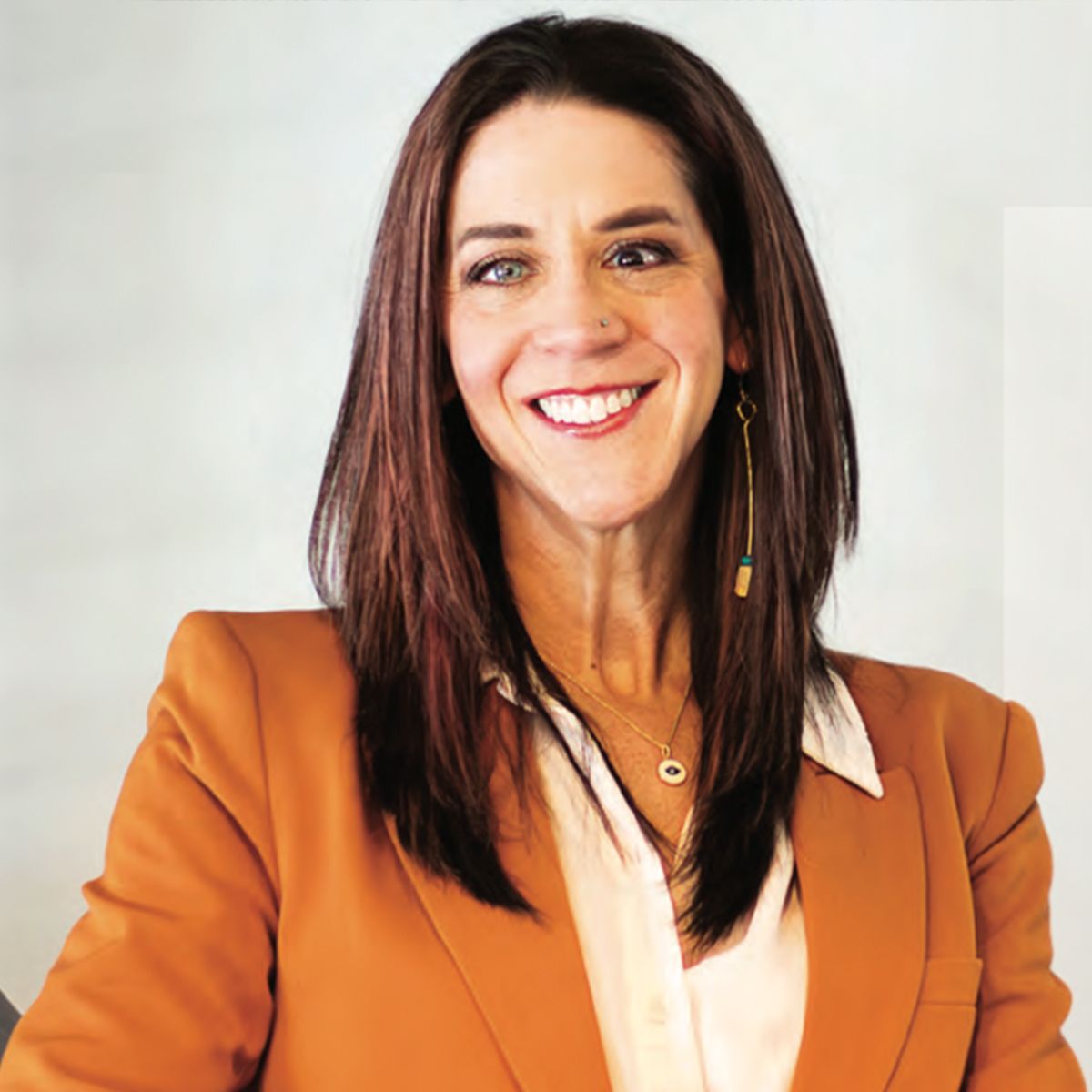Publication
Article
Heal
Post-Cancer Fatigue: The Invisible Wound
Author(s):
Cancer survivors may appear to have returned to normal, but fatigue can continue to affect quality of life for years.
WENDY HARPHAM - PHOTO BY JARED REY

WENDY HARPHAM - PHOTO BY JARED REY
Wendy Harpham knows fatigue — life-changing, emotionally debilitating fatigue.
When the successful Dallas internist received a diagnosis of non-Hodgkin lymphoma in 1990, she wasn’t surprised by the fatigue that accompanied her treatments — but she expected it would eventually end.
It never did.
What Harpham calls “life-altering” fatigue continued as she went in and out of treatment until 2007, when she went into remission. “Since I have been in the latest remarkable durable remission of 10-plus years, my fatigue has lessened but still impacts my daily life,” she says.
A COMMON SIDE EFFECT
The married mother of three now accepts that her fatigue is not a recoverable side effect, and she has adapted her life — and her family’s lives — accordingly.
Fatigue ranks as perhaps the most prevalent of cancer complaints — studies over the past two decades have confirmed it as a significant problem during and for some years after treatment ends for 75 to 100 percent of survivors — yet its physiologic causes remain unknown.
Researchers now focus on confirming its prevalence and identifying ways to improve quality of life for those battling fatigue.
For example, researchers found that survivors over 65 — some of whom had been treated decades earlier — reported more fatigue after treadmill tests and walked slower than participants who had never had cancer. The findings, recently published in the journal Cancer, come from the Baltimore Longitudinal Study of Aging, a project that has enrolled thousands since 1958. Researchers have included measurements of endurance and fatigability since 2007.
Although cancer treatment aims at survival, the longterm effects of fatigue on health and quality of life must be examined more fully, says the study’s senior researcher, Jennifer A. Schrack, Ph.D., an assistant professor of epidemiology at Johns Hopkins School of Bloomberg Health in Baltimore.
That study is just the latest to confirm a problem in great need of solutions. Fatigue’s complexity has launched more investigation into what affects existing fatigue rather than what causes it in the first place, according to Debra Barton, Ph.D., RN, the Mary Lou Willard French Endowed Chair and a professor of oncology nursing at the University of Michigan School of Nursing in Ann Arbor. She has studied fatigue since the early ’90s, prompted by her years of experience as an oncology nurse, which included co-facilitating support groups.
“I think seeing how prevalent fatigue is, how long it can last and how much it can interfere with people’s daily lives — and the fact that no one knows how to prevent it or treat it very well — is what motivated me to look into it,” Barton says. “What I understand from the evidence is that there are many different reasons why people have long-term fatigue, most of which we still do not understand, despite all the years of research.”
Cancer-related fatigue (CRF) is the medical term used in the oncology community. It creates further questions regarding how it differs from normal fatigue, says Barton. “When I present to colleagues and talk about CRF,” she says, “they ask, ‘What exactly does it mean? Are we talking about treatment-related fatigue, or are we talking about fatigue from the cancer itself?’”
The answer that has emerged defines CRF as fatigue that is out of the ordinary, not the kind from jet lag or a poor night’s sleep or being up with a newborn and not relieved by sleep or rest. “It is (defined) by ruling out other issues,” Barton says, “but it seems to be an experience that many, many survivors talk about.”
COPING WITH LIFE-ALTERING FATIGUE
Patients’ descriptions of CRF range from lacking the energy to stand up from a chair after watching television to never regaining former levels, even three years after treatment.
Harpham first noticed the extent of her fatigue during interferon therapy in 1992.
“I am someone who likes to go, go, go,” Harpham says. “For years my fatigue was one of the greatest challenges of survivorship.”
During her second recurrence, Harpham was forced to retire from clinical medicine. A number of issues drove her frustration, Harpham says, including having no objective measure to understand how she was coping with what she calls her “invisible wound” and not knowing what was real and what was her not trying hard enough. “I didn’t have the language for it. Everyone talks about being tired, but I had to distinguish the fatigue healthy people feel from the fatigue I was feeling and judge what I could or couldn’t do,” she says.
Cognitive problems exacerbated her fatigue. “I made mistakes (that) embarrassed me and threatened my sense of self, causing practical problems for me and others, such as when I would forget to do something I had promised to do,” Harpham says. “This increased my overall stress. The fact that I couldn’t trust myself to do simple things correctly, such as run errands or go to a meeting, made every day filled with fear of goofing up.”
When she began to explore her fatigue, Harpham considered two components: the practical medical issues and the emotional aspects. She worked with her physicians to minimize any treatable causes, such as having her thyroid checked annually because she had a history of thyroid disease and had received radiation to the neck in 1992.
She had periodic blood work to identify anemia or kidney and liver problems, she says, adding that she developed immunodeficiency that will continue for the rest of her life. Some lifestyle changes have also helped Harpham minimize fatigue. Large meals make her tired, so she eats small, healthy meals and snacks. She works out — but stops before the activity leads to fatigue.
At the beginning of her treatment, Harpham saw a sleep specialist to help identify factors that were keeping her from restful sleep, such as chronic leg pain, stress and sleep-disturbing medication. A new mattress eased her leg pain; practicing good sleep hygiene, such as avoiding stimulants close to bed and exercising, and meditating helped reduce stress; and, when necessary, she took prescribed sleep medication.
Harpham accepts that casual acquaintances and friends can’t comprehend her fatigue. It’s more important that close friends and family understand her condition, she says, so they can work together to develop a coping system. For example, she says, when she declines requests, those close to her understand, and she doesn’t feel bad about saying no.
UNDERSTANDING FATIGUE
When Harpham gave up her medical practice, she turned to writing for survivors and the medical community, addressing issues such as living with cancer and parenting after the disease. “Writing books and articles takes little physical energy and is one-way communication, so it doesn’t demand social skills or short-term memory the way a workplace with people interactions does,” she says. “My writing is still challenging and stimulating without overtaxing me.”
Many factors cause fatigue, including anemia, thyroid problems, stress, deconditioning, dehydration, sleep disturbances, diet, depression, metabolic abnormalities and cardiac function, according to Barton. They can overlap, as Harpham experienced, with some factors being physical and others psychological. But because patients self-report — often without using a particular language, as Harpham described — it is difficult to determine the underlying causes.
Until more is known about the physiologic causes of fatigue, Barton says, each person must learn to adapt using trial and error. Research suggests that those with fatigue should strive to identify their energy peaks and plan activities accordingly as best they can.
Significant evidence links physical activity with reduced fatigue — and yoga may be even more effective than traditional exercise. Researchers from the University of Rochester Medical Center in New York found that cancer survivors who practiced yoga as part of their exercise program felt less fatigued. Specifically, they slept less but experienced less fatigue and cut down on daytime napping. The ultimate result of the study was a 37 percent reduction in what the researchers termed “daytime dysfunction.”
Another study, Yoga for Cancer Survivors, looked at the impact of a four-week yoga class for women over 60 who had CRF. The results revealed that the participants experienced significantly less cancer-related, physical and mental fatigue.
Pharmacologic solutions to fatigue include several drugs that have shown efficacy, but none has been singled out as a one-size-fits-all solution. Barton has been studying the use of American ginseng, a natural energy booster in traditional Chinese medicine. “Fatigue has been linked to an increase in the immune system’s inflammatory cytokines and to poorly regulated levels of the stress hormone cortisol,” she says. “Ginseng’s active ingredients, called ginsenosides, have been shown in animal studies to reduce cytokines related to inflammation and to help regulate cortisol levels.”
One challenge, she says, is that the ginseng must be pure, ground American ginseng root, not the off-the-shelf kind consumers generally purchase, Barton says. Common ginseng, she says, is sometimes processed using ethanol, which can produce estrogen-like properties that may be harmful to patients with breast cancer. Barton used ginseng from Wisconsin after working with the Ginseng Board of Wisconsin to guarantee purity.
The results of a Mayo Clinic Cancer Center-led study showed taking 2,000 milligrams of ginseng, in capsule form, daily for eight weeks led to a significant improvement in general exhaustion. “After eight weeks, we saw a 20-point improvement in fatigue in patients with cancer measured on a 100-point, standardized fatigue scale,” Barton says. She plans to examine the herb’s effects on specific biomarkers for fatigue, hoping to find a way to help the body through treatment and prevent long-term fatigue.
“I think what we strive for in terms of care these days is shared decision making, shared care and good communication between providers and patients,” she says. “There is no blood test we can do and then say, ‘Oh, you have cancer-related fatigue, and here is what you do.’ That does not exist.” What people need to do for their own fatigue is very individualized, she says.
Today, Harpham says, she accepts her limits but still hopes for improvement. “I avoid the things that make it worse, such as overdoing, and I never take chances when the consequences matter, like driving when I am too tired or making important decisions.”
She is more forgiving of herself, too. “I still don’t like it, but I pay as little attention to it as possible,” she says. “I rarely talk about it, because focusing on it is a downer. I focus on all I can do and all the blessings in my life.”






